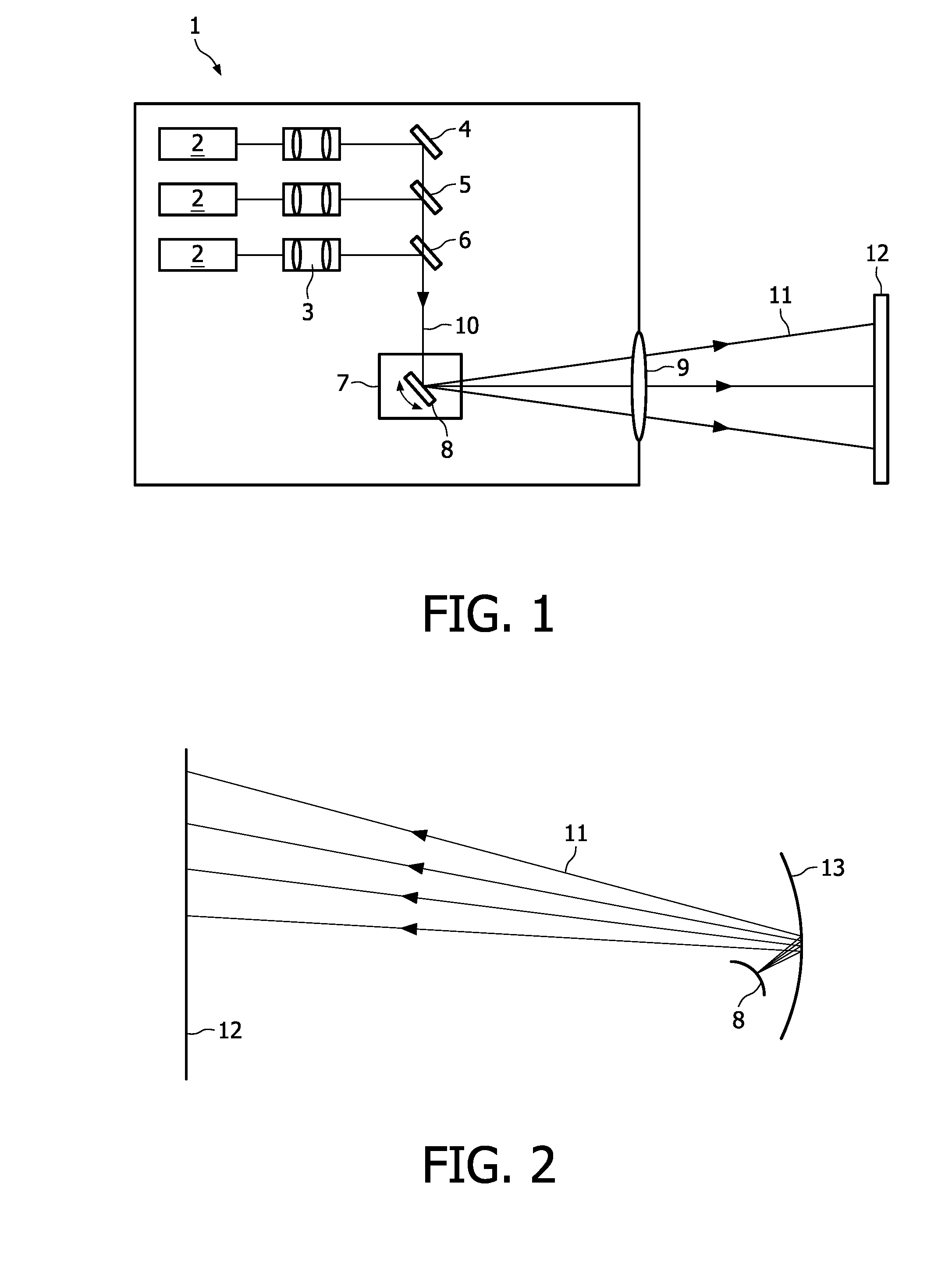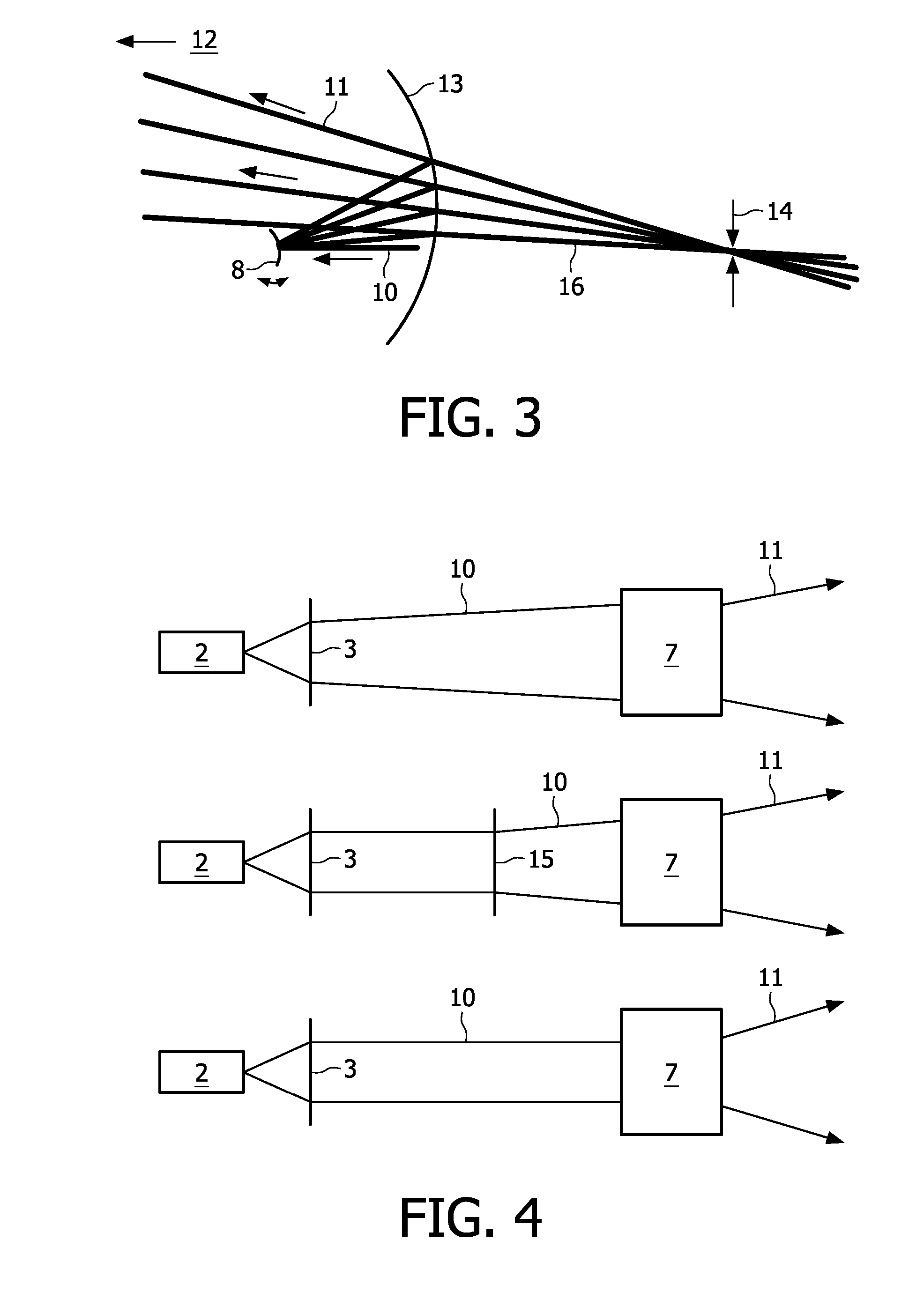Laser scanning projection device
a projection device and laser technology, applied in the field of projection devices, can solve the problems of complicated risk levels for the eye, high laser power may be harmful to the eyes of a person, etc., and achieve the effect of lowering the risk of eye damag
- Summary
- Abstract
- Description
- Claims
- Application Information
AI Technical Summary
Benefits of technology
Problems solved by technology
Method used
Image
Examples
Embodiment Construction
[0024]FIG. 1 is a schematic view of an example of the projection device 1 according the present invention. In this device 1 three laser light sources 2 emitting red (R), green (G) and blue (B) laser light beams are included. The laser light sources 2 may be for example laser diodes. The divergent laser beams emitted by these laser light sources 2 are collimated by a collimating optics 3 and combined to form one single laser beam 10. The combination is made via dielectric mirrors 4, 5, 6. Dielectric mirror 4 is designed to reflect light in the red wavelength region. Dielectric mirror 5 reflects in the green wavelength region and is transparent in the red wavelength region, whereas dielectric mirror 6 reflects in the blue wavelength region and is transparent in the red and green wavelength regions. The combined single laser beam 10 is directed to a 2D scanning unit 7, which contains at least one scanning mirror 8. In FIG. 1 only for illustrative purposes one scanning mirror 8 is depic...
PUM
 Login to View More
Login to View More Abstract
Description
Claims
Application Information
 Login to View More
Login to View More - R&D
- Intellectual Property
- Life Sciences
- Materials
- Tech Scout
- Unparalleled Data Quality
- Higher Quality Content
- 60% Fewer Hallucinations
Browse by: Latest US Patents, China's latest patents, Technical Efficacy Thesaurus, Application Domain, Technology Topic, Popular Technical Reports.
© 2025 PatSnap. All rights reserved.Legal|Privacy policy|Modern Slavery Act Transparency Statement|Sitemap|About US| Contact US: help@patsnap.com



